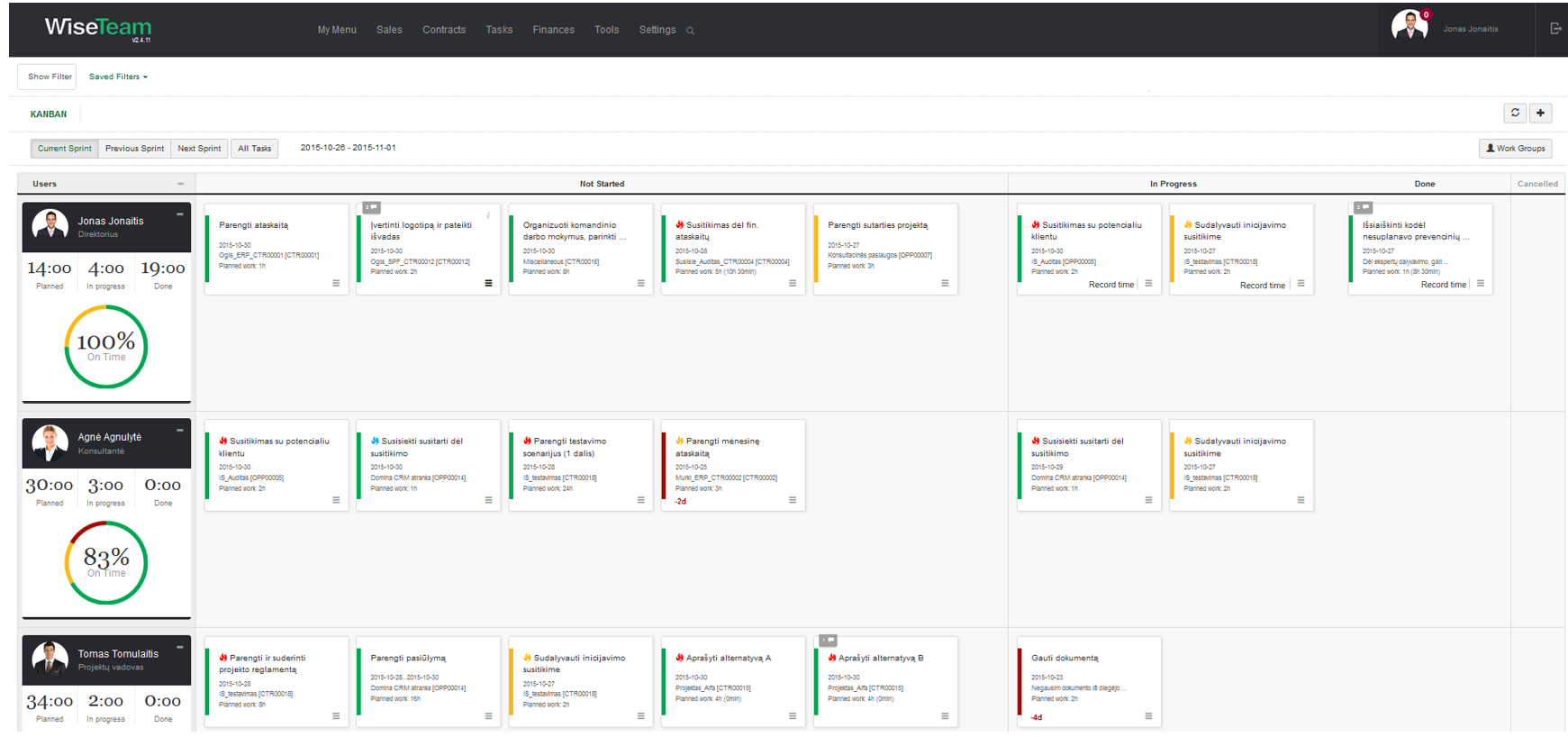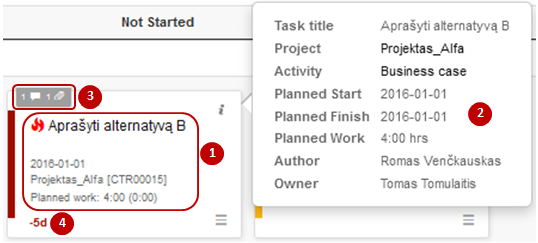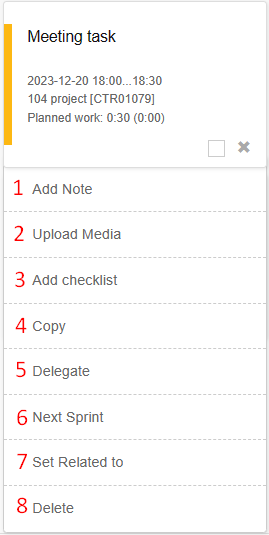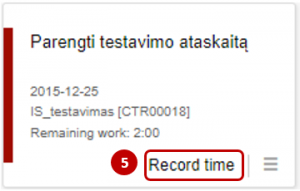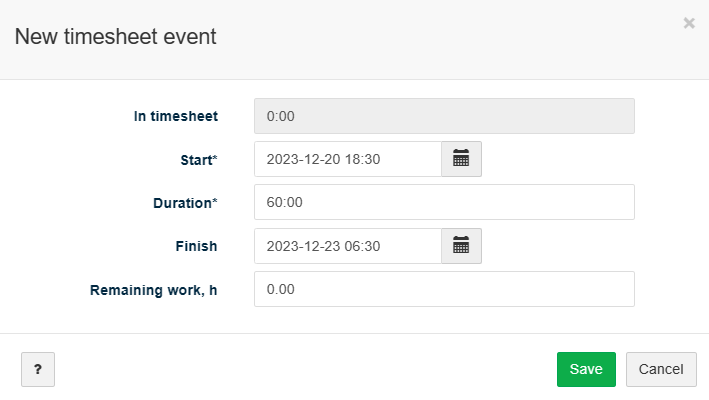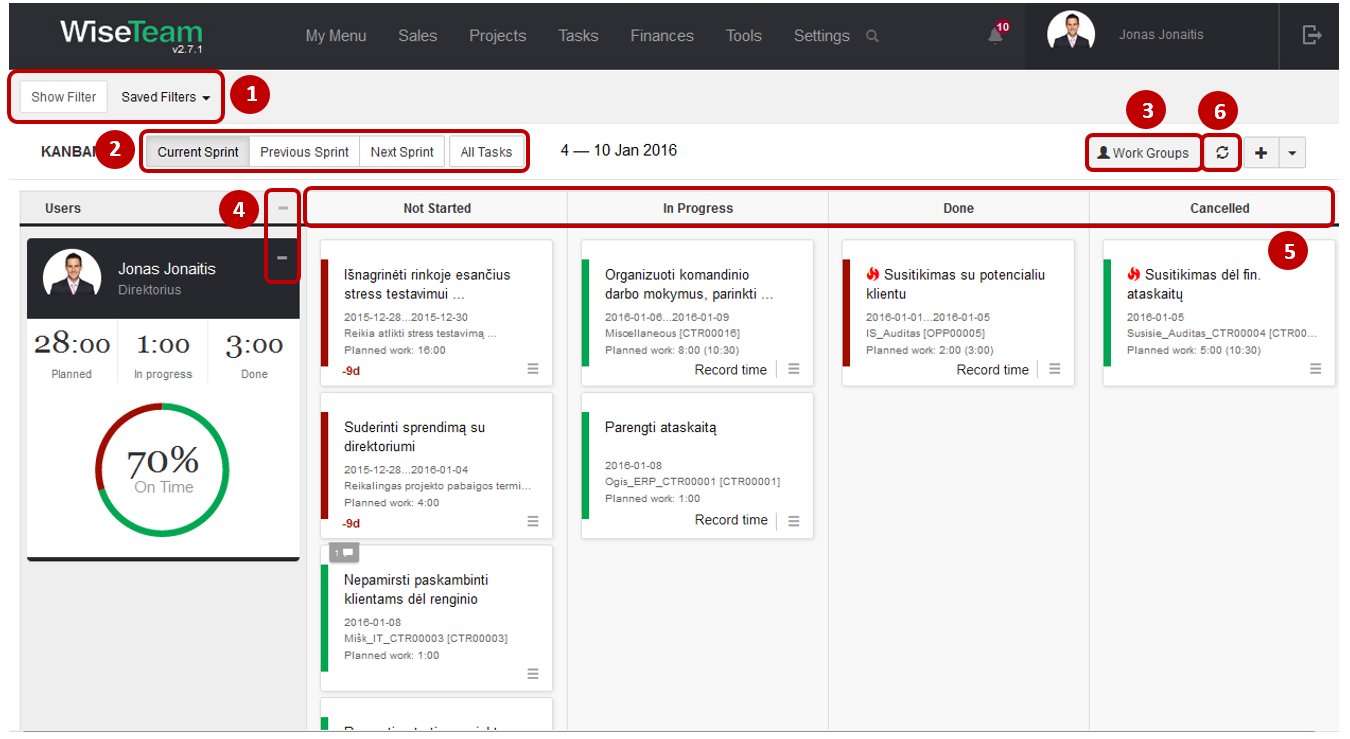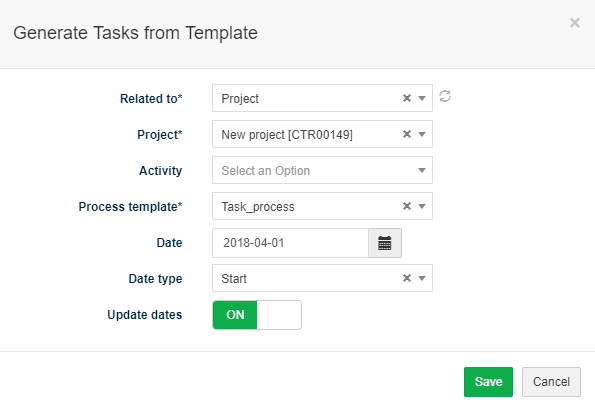Navigation: Tasks → Kanban
Kanban is a way to visually organize Tasks by making the prioritization clear. Task is a piece of work assigned to responsible person (User) and required to be done as part of the whole duty. Kanban matrix allows managing every User’s Tasks according to sprint. Sprint is described as time length that is restricted to a specific duration with an accuracy of 1 day. Sprint is determined in Settings → Settings → General. Kanban is based on Tasks every User plans to, does, has done or cancelled in determined sprint.
Understand how Kanban works
How Kanban works:
1. Task is created and assigned to User. In Kanban every Task is visualized as rectangle with green / yellow or red colored edge.
2. According to planned start and finish dates of the Task, also sprint determined system depicts Kanban matrix: further User can manage his Tasks in current, previous, next sprints by marking Tasks as Not Started, In Progress, Done, Cancelled. Moves appear as soon as User changes status of the Task or simply drags it among the fields named Not Started, In Progress, Done, Cancelled.
3. With the reference to changes of statuses and recorded time, system automatically counts and submits hours of Planned, In Progress, Done Tasks of every User:
- In part Plannned the sum of Tasks’ planned work is shown. If Task’s status was changed to In Progress, related Time record created and when Tasks’s status was changed back to Not started, Task’s remaining work will be counted.
- In part In progress the sum of Tasks’ remaining work is shown. At first remaining work equals to planned work. When time records are created remaining work is reduced according to the actual work. However, remaining work can not be negative. Is actual work exceeds planned work, remaining work remains 0.
- In part Done the sum of Tasks’ actual work is shown. If actual work is not filled, planned work is used to count Done work.
System also automatically counts the ratio of Tasks done on time and all Tasks.
4. Colors of Task rectangle edge have meaning:
- Green color means that Task is being done on time as planned with no deviations.
- Yellow color indicates that particular Tasks should start or finish this day.
- Red color indicates of the situation that is behind the planned schedule: either to begin or finish the Task.
- Grey rectagles visualize Tasks that belong to the process of several related Tasks and are inactive, these Tasks can not be started until the previous Tasks will not be completed.
5. It is possible to see Tasks according to various sections: Current Sprint, Previous Sprint, Next Sprint, All Tasks. By pressing tabs, system depicts the view. Also it is possible to organize the Task view by applying Filter.
Understand information provided in the Task card
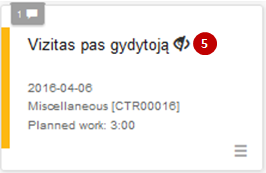
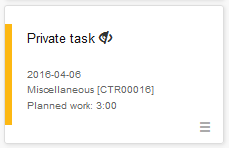
Information provided in the Task card:
1. In every Task card you can see general Task’s information: title, planned start and finish dates, related object, planned work, task priority (indicated by blue, yellow or red fire icon ![]() ).
).
2. By clicking ![]() it is possible to get more detailed information in a wider view.
it is possible to get more detailed information in a wider view.
3. If files and notes are added to the Task the number of added files and notes is showed. It is possible to review added notes by clicking note icon ![]() and to review added media by clicking media icon
and to review added media by clicking media icon ![]() .
.
4. If Task is behind the planned schedule: is late either to begin or end, at the bottom of the Task card you can see how many days the Task is late.
5. Icon ![]() shows that Task is private and other users cannot see details of the Task.
shows that Task is private and other users cannot see details of the Task.
Perform actions with a Task in Kanban window
It is possible to perform several actions with a Task in Kanban window without opening Task’s form:
1. Add note: is used to add notes. After clicking Add note modal window will be opened and it will be possible to add notes without opening Task’s form.
2. Upload media: is used to add media. After clicking Upload media modal window will be opened and it will be possible to add files without opening Task’s form.
3. Add checklist: is used to add checklist( ![]() ). The form that opens has the ability to create a checklist or load a checklist template. Creating template Settings → Checklist.
). The form that opens has the ability to create a checklist or load a checklist template. Creating template Settings → Checklist.
4. Copy: is used to make a copy of the Task. The Note and Media copies if the user turns on the Note → ON, Media → ON settings when copying a task.
5. Delegate: is used to delegate Task to other users. After clicking Delegate task a list of possible users will be opened. Otherwise, it is possible to change Owner of the Task in the Task form.
6. Next sprint: is used to move Task to next sprint. After clicking Next sprint the Task will be moved to the first day of the next sprint. Note: this function is only available when status of the Task is Not Started.
7. Set related to: is used to change object that Task is related to.
8. Delete: is used to delete Task.
9. Delete not started recurring tasks: is used to delete not started recurring tasks.
8. Record time: is used to record time spent working on the Task. After clicking Record time modal window will be opened with a possibility to record time spent working on the Task and remaining work needed to finish the Task. Important: this function is only available when status of the Task is In Progress or Done. This function is not available for Meeting tasks.
9. In the Kanban form is possible manually unlock pending process task.
Manage Kanban view
There are several possibilities to manage Kanban view:
1. It is possible to define and save filter that can be used to filter Tasks shown in Kanban.
2. If users are assigned to different Work groups, it is possible to choose which Work groups should be shown on Kanban.
3. It is possible to choose period (sprint) which Tasks should be shown: Current Sprint, Previous Sprint, Next Sprint, All Tasks.
4. It is possible to collapse Tasks’ view by clicking ![]() in order to have generalized view. It is possible to collapse Tasks of one user or all users.
in order to have generalized view. It is possible to collapse Tasks of one user or all users.

5. It is possible to collapse columns of the Kanban table by clicking on the names of columns. For example, if you do not need to see Tasks with statuses Cancelled and Done, you can collapse these columns.
6. Press refresh button ![]() in top right corner in order to refresh only the Kanban information.
in top right corner in order to refresh only the Kanban information.
Manage work groups on Kanban
To set which work groups have to be shown on Kanban follow these steps:
1. Click ![]() .
.
2. Choose which work groups to show on Kanban, define their order and click Save.
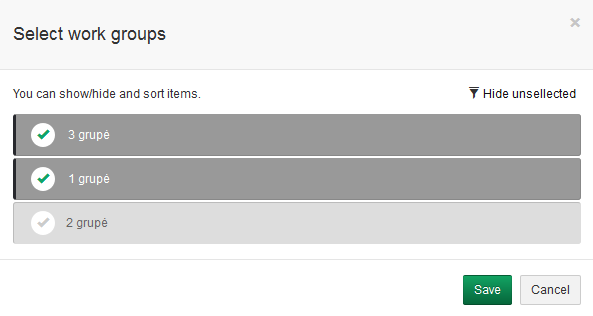
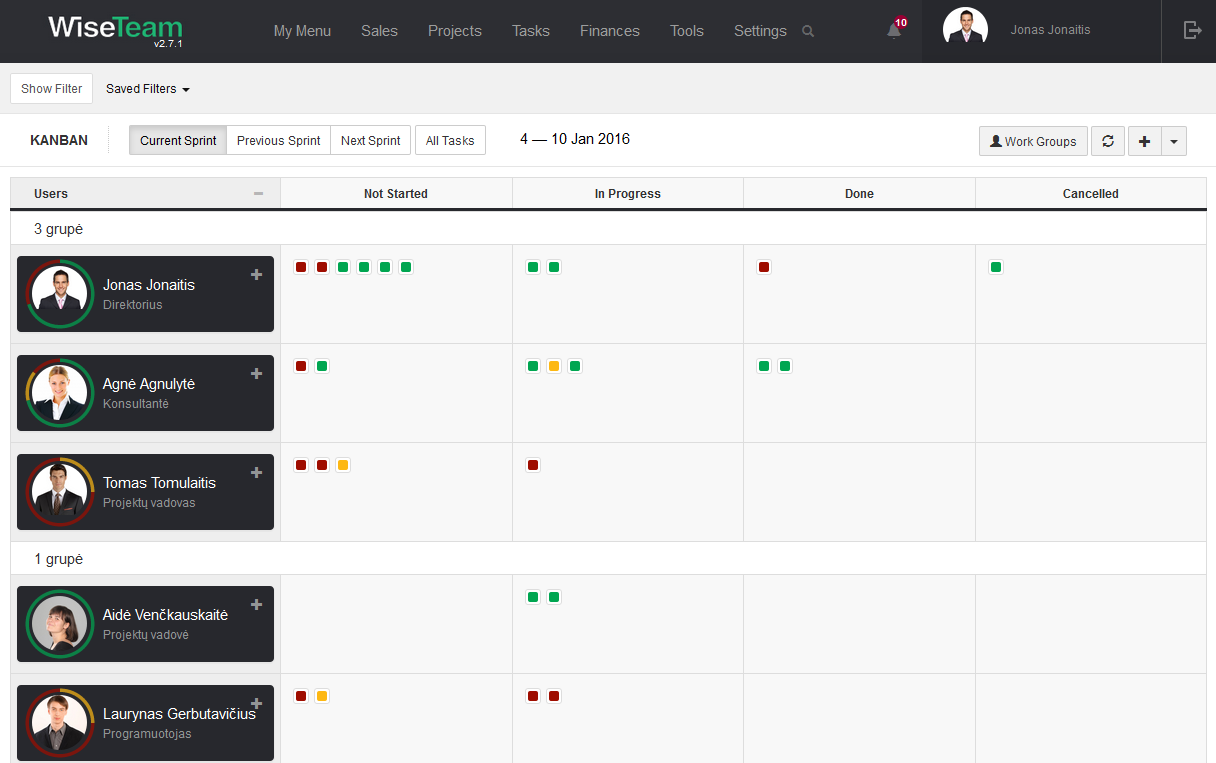
Create Task in Kanban window
To create new Task in Kanban window click in top right corner, fill in Task information and click Save.
You can also click ![]() button to create a new Task related to one of the most frequently used objects within the last month. In this case, part of the new Task information will be filled automatically.
button to create a new Task related to one of the most frequently used objects within the last month. In this case, part of the new Task information will be filled automatically.

After clicking ![]() button there is also a possibility to start a process. Click
button there is also a possibility to start a process. Click ![]() , select Process and fill in information to what Project and Activity Tasks should be related, select process template and date when process should start or finish.
, select Process and fill in information to what Project and Activity Tasks should be related, select process template and date when process should start or finish.
